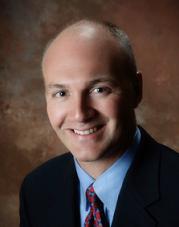 Scott Trenhaile, MD, board-certified in sports medicine, currently practices with Rockford (Ill.) Orthopedic Associates. He also serves as a clinical assistant professor of surgery at the University of Illinois College of Medicine in Rockford. He specializes in sports-related injuries, comprehensive arthroscopy and shoulder, knee and elbow surgery. Here he discusses how he choose the field of orthopedics and sports medicine, biologics, his "all-arthroscopic" approach and the need for evidence-based medicine.
Scott Trenhaile, MD, board-certified in sports medicine, currently practices with Rockford (Ill.) Orthopedic Associates. He also serves as a clinical assistant professor of surgery at the University of Illinois College of Medicine in Rockford. He specializes in sports-related injuries, comprehensive arthroscopy and shoulder, knee and elbow surgery. Here he discusses how he choose the field of orthopedics and sports medicine, biologics, his "all-arthroscopic" approach and the need for evidence-based medicine. Q: What attracted you to the field of orthopedics?
Dr. Scott Trenhaile: My first course in medical school was anatomy class. I loved studying the mechanics of the human body. The application of the human anatomy in such a literal sense made my clinical rotation in orthopedics my favorite by far. I knew this was what I wanted to do as my career choice.
Q: Have you always been interested in pursuing sports medicine?
ST: Sports and sports medicine have long been of interest to me. As an active participant in athletics all my life, I’ve personally experienced numerous injuries and resulting surgeries on my shoulders, knee, ankle and eye. This experience as an athlete and a patient has offered me invaluable perspective and insight in my clinical practice.
Q: Are there currently any new developments in the field of orthopedics and sports medicine that you are excited about?
ST: I think the future of sports medicine and orthopedics is the field of biologics and their application. Improved healing and faster return to normal activity is the primary goal. Numerous technologies are under investigation. I think these areas of medicine will be game changers in the future.
Q: How would you describe the technique that you developed to address biceps tendon pathology?
ST: My technique is an "all-arthroscopic" approach that removes the damaged portion of the long head of biceps from the shoulder joint. The remaining healthy biceps tendon is then reinserted to the humerus bone using an interference screw.
Q: What do you think are the major forces driving change in orthopedics and sports medicine?
ST: The major driving forces in orthopedics and sports medicine today focus on evidence based medicine and outcomes. We are striving to find the most efficient way to obtain reliably good outcomes for our patients. There is a huge demand to get patients and athletes back to full recovery more quickly in the least expensive way possible.
More Articles on Sports Medicine:
Providing Quality Care in Sports Medicine: Q&A With Dr. Theodore Schlegel of Steadman Hawkins Clinic Denver
Arthroscopy, Minimally Invasive Surgery and Orthopedic Innovation: Q&A With New York Orthopedic Surgeon Dr. Howard Levy
Combining a Drive for Medicine & Sports: Q&A With Dr. Hooman Melamed of DISC Sports & Spine Center

